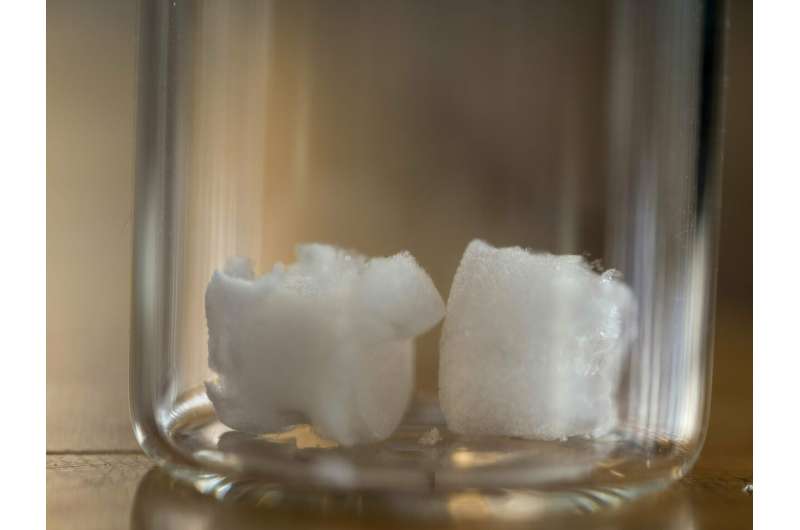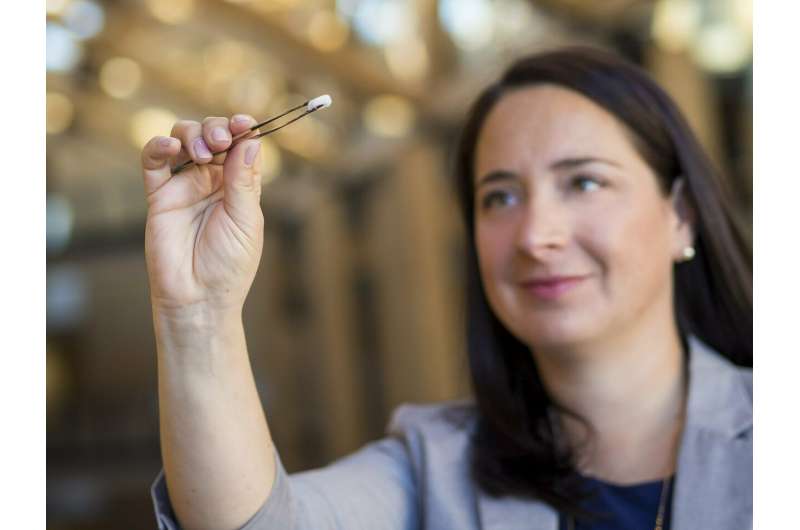From foam to bone: Plant cellulose can pave the way for healthy bone implants

Researchers from the University of British Columbia and McMaster University have developed what could be the bone implant material of the future: an airy, foamlike substance that can be injected into the body and provide scaffolding for the growth of new bone.
It's made by treating nanocrystals derived from plant cellulose so that they link up and form a strong but lightweight sponge—technically speaking, an aerogel—that can compress or expand as needed to completely fill out a bone cavity.
"Most bone graft or implants are made of hard, brittle ceramic that doesn't always conform to the shape of the hole, and those gaps can lead to poor growth of the bone and implant failure," said study author Daniel Osorio, a Ph.D. student in chemical engineering at McMaster. "We created this cellulose nanocrystal aerogel as a more effective alternative to these synthetic materials."
For their research, the team worked with two groups of rats, with the first group receiving the aerogel implants and the second group receiving none. Results showed that the group with implants saw 33 per cent more bone growth at the three-week mark and 50 per cent more bone growth at the 12-week mark, compared to the controls.
"These findings show, for the first time in a lab setting, that a cellulose nanocrystal aerogel can support new bone growth," said study co-author Emily Cranston, a professor of wood science and chemical and biological engineering who holds the President's Excellence Chair in Forest Bio-products at UBC. She added that the implant should break down into non-toxic components in the body as the bone starts to heal.
The innovation can potentially fill a niche in the $2-billion bone graft market in North America, said study co-author Kathryn Grandfield, a professor of materials science and engineering, and biomedical engineering at McMaster who supervised the work.

"We can see this aerogel being used for a number of applications including dental implants and spinal and joint replacement surgeries," said Grandfield. "And it will be economical because the raw material, the nanocellulose, is already being produced in commercial quantities."
The researchers say it will be some time before the aerogel makes it out of the lab and into the operating room.
"This summer, we will study the mechanisms between the bone and implant that lead to bone growth," said Grandfield. "We'll also look at how the implant degrades using advanced microscopes. After that, more biological testing will be required before it is ready for clinical trials."
"Cross-linked cellulose nanocrystal aerogels as viable bone tissue scaffolds" was published last week in Acta Biomaterialia.
More information: Daniel A. Osorio et al, Cross-linked cellulose nanocrystal aerogels as viable bone tissue scaffolds, Acta Biomaterialia (2019). DOI: 10.1016/j.actbio.2019.01.049
Journal information: Acta Biomaterialia
Provided by University of British Columbia



















